An arboretum is a living museum of trees and plants. It’s a specialist botanical garden, a space designed for appreciating the wonder of nature, where scientists can conduct research and visitors can learn about tree care and maintenance.
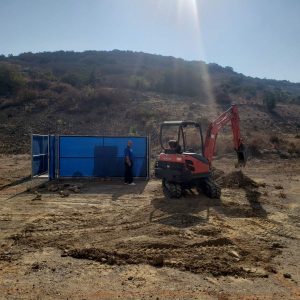
Only sites meeting stringent specified standards — including those involved with education, tree science and conservation — can become officially accredited arboretums.
Back in 2021, arboretums were very much on the minds of surveyors from the educational facilities organization APPA when they visited California State University San Marcos. The surveyors were on campus to assess CSUSM’s facilities for a prestigious award, and while they were there, they couldn’t help but be impressed by the condition of the CSUSM grounds. They were struck particularly by the quality of the work involved in maintaining the institution’s inventory of trees and plants.
“One of the surveyors mentioned that we should try and get certified as an arboretum,” recalled Floyd Dudley, director of Facility Services at CSUSM. “It wasn’t something I’d considered. So after their visit, I started researching what was involved in the process.”
Dudley’s research suggested that arboretum certification for CSUSM was achievable, but it wasn’t automatic. There was a rigorous process to follow and important benchmarks to meet. It ultimately relied on a campus wide policy of careful environmental management.
So how do you create arboretum-worthy conditions in a multi-functional education landscape, one used by thousands of people every day, in the very heart of drought-ravaged Southern California?
You need a plan. You need coordination across departments and teams. And perhaps most crucially, you need to carefully and intelligently manage your precious water resources – because without water, none of this is possible.
Saving through sustainability
At CSUSM, the people tasked with getting water to more than 160 acres of landscape are Victor Chavez, Isidro Alvarez and Ricardo Jacobo. Chavez is assistant director of Facilities Services, Alvarez is the lead grounds worker, and Jacobo is the irrigation specialist. The work they do falls under the umbrella of the university’s Sustainability Masterplan.
That’s important, because the Masterplan emphasizes CSUSM’s position as an active leader in sustainability and makes clear not just the moral and ethical case for sustainability, but also the business case: saving money and providing educational and research opportunities for students.
The Sustainability Masterplan is explicit: “By investing in energy-efficient/high-performance buildings, water conservation efforts, and reduction in waste levels, we are also reducing and/or maintaining our utility spending even as we continue to grow.”
Reducing water usage is a key component of the plan’s goals in Natural and Landscape Management Practices. Two aspects are highlighted: 1) planting drought-tolerant and native plants across campus to reduce irrigation efforts and 2) using proper irrigation practices. These have both been core elements that have paved the way for the arboretum project’s success.
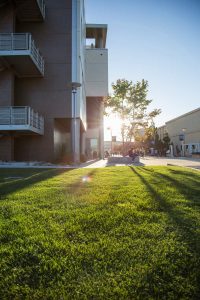
Drought-tolerant and native plants are central to the new arboretum trail, and smart irrigation from Carlsbad-based industry leader Calsense is a crucial part of CSUSM’s water management strategy. In fact, CSUSM recognized the importance of smart, sensor-based irrigation early, installing Calsense controllers more than 16 years ago. The result is the ability to care for the campus’s lawns and plants even during the U.S. West’s ongoing megadrought.
Watering in sync with weather
Each day, Chavez and his team receive alerts from the Calsense system, which lets them know if there are issues to be addressed: leaks, blockages, power outages and so on. All of these can have an impact on how much or how little water the plants and lawns at CSUSM receive, and it’s crucial to ensure that they receive exactly the right amount of water — neither too little nor too much.
There are currently 32 Calsense controllers in use across the CSUSM campus. Most irrigation is timed to occur at night, and those timings are calibrated carefully so as not to overlap. The system is what is known as “weather-based,” in that the controllers receive information from online forecasts and via their own sensors, and then they adjust their watering schedule accordingly.
“The system takes into account the amount of rain we receive,” Chavez said. “So if it rains for a week, it might be off for a week or longer. It’s set up so that it gives adequate time for water to saturate and nourish the plants before it recognizes that it needs to provide water again.
“It means that we are not wasting water unnecessarily, and it means the plants don’t get over-watered, which can be bad for them. It also saves us money and a lot of time trying to make these sorts of calculations ourselves.”
A sense of civic responsibility
An important part of CSUSM’s water management strategy is its use of well water, sourced from its own on-site underground aquifer and distinct from water supplied by the Vallecitos Water District (aka “city water”). Around 70% of the water used on campus comes from the university’s own well.
Calsense worked with CSUSM to ensure that the university was in compliance with Vallecitos’s water restrictions last summer. Weather-based smart irrigation can often be exempt from water authority restrictions since it is considered to be more efficient than traditional sprinkler systems. CSUSM’s own well water is not subject to those restrictions, but the university adjusts its well water usage on campus to match them: If water from the city supply was restricted to use three times a week, CSUSM would also reduce well water usage (from five) to three times a week. CSUSM is big on civic responsibility, and it’s not just talk.
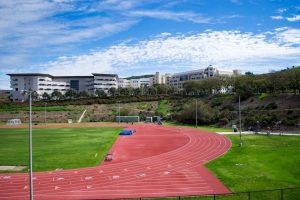
Recently, Alvarez and Jacobo were heavily involved in helping to transition landscape irrigation at Markstein Hall — home of the university’s College of Business Administration and smaller departments from the College of Humanities, Arts, Behavioral and Social Sciences — from city water to well water. This had been a longstanding ambition for multiple CSUSM departments, and involved running a new mainline from the well to the building. It’s another way the university is reducing its impact on city water supplies.
A tailored approach to sports fields
For Jacobo, the irrigation specialist, the main advantage that the Calsense technology brings is its ability to detect leaks and shut off specific parts of the system when they occur. He said the system is particularly valuable in this sense on weekends – because during the week, he and Alvarez do daily rounds to ensure the health of the irrigation system.
“If we didn’t have the Calsense system providing alerts, we’d have to rely on students, staff, faculty or even the University Police Department to notice the excess water running and report it,” Jacobo explained. “And in the meantime, the water keeps leaking until we get to it. But our smart controllers can identify the leak and shut off that part of the system so there’s no water being wasted until we can fix it. It’s then smart enough to calculate how much more water that area will need to make up for what it missed while the controller had it shut down.”
Jacobo also has to be aware of the different ways that the campus facilities are used, because this will also have an impact on how much water they require and when it’s going to be needed. For instance, there are five athletic fields at CSUSM. Two of those are supplied with the university’s well water, while the other three are on city water, primarily because of where they are located.
These fields, as you might expect, require a different kind of care compared to the rest of the campus. But the different kinds of fields themselves also have specific needs.
“Fields used for track are in use year-round, but baseball and softball fields are obviously more in use during their seasons,” Alvarez said. “But that doesn’t mean those fields don’t need to be maintained during the offseason – they still need water. When it’s time for fields to be reseeded, because they’ve been played on and need replacing, water use increases to allow seeds to germinate.”
It’s all part of the constant planning and attention that looking after such a large, multifunctional institution requires. It needs multiple departments to work in unison and harmony, and to share the common goal of providing beautiful facilities in as environmentally friendly a way as possible.
You can tell when these sorts of holistic plans are working, because outsiders visit your campus and say things like, “Hey, this place is in such good condition, you should be officially recognized for it.”
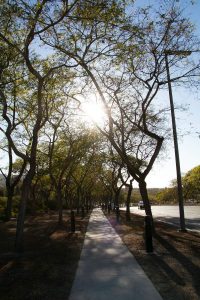
Award-winning and arboretum-ready
In August 2021, CSUSM won APPA’s Award for Excellence in Facilities Management. By then, the arboretum certification process was underway, and it’s on schedule to be completed in April this year. Accreditation comes via ArbNet, which is sponsored by The Morton Arboretum, Botanic Gardens Conservation International and the American Public Gardens Association.
“Being an accredited arboretum shows the university’s commitment to the highest industry standards,” explained landscape architect Meredith Branstad of Helix Environmental Planning, who has been working with CSUSM to guide the arboretum process to completion. “As part of this process, the university has assembled an arboretum committee composed of faculty, facilities staff and a sustainability management team member to manage the arboretum and prepare an arboretum management plan.
“This plan establishes the goals of the arboretum, which are to: 1) preserve and care for the existing trees and the landscape on campus, 2) promote a resilient and diverse campus tree collection, 3) educate visitors about climate-appropriate and drought-tolerant tree species, indigenous trees, general tree care and maintenance, and the benefits provided by trees, 4) provide outdoor education and research opportunities for members of the CSUSM community, and 5) foster community involvement with organizations or individuals outside of the CSUSM campus through events, donations, volunteer opportunities or other activities.
“The arboretum will further the university’s educational mission by installing signs at each tree in the collection that link to a website with more information about the tree species. Additionally, as an accredited arboretum, the university will be holding at least one public event in the arboretum per year.”
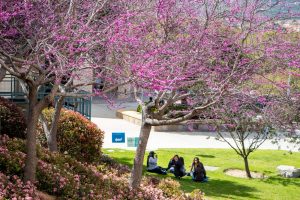
The planned CSUSM arboretum trail includes a mix of ornamental and native plants, with 39 trees and 51 shrubs highlighted along the designated pathway. Water must be provided to the plants as appropriate, said Kari Conradie, project manager/horticulturist at LandGraphics: Landscape and Arborcare Management.
“Natives obviously want to be treated the way the seasons treat them,” she said, “so we need to be mindful of summertime watering and not over-water when the plants are in their dormant phase.”
Managing water use for the arboretum is a task that Chavez, Alvarez and Jacobo have more than proven they’re capable of. CSUSM’s arboretum plants are in good hands.
By Calsense
Visit calsense.com for more information.

